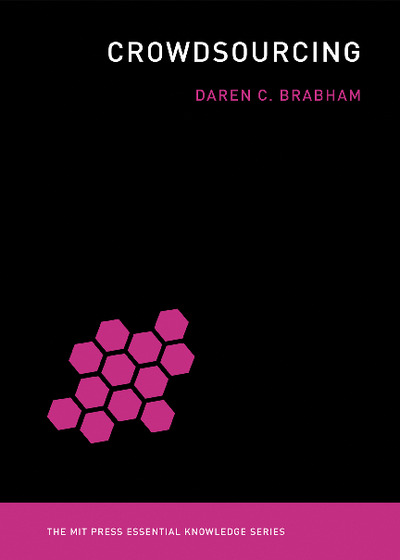Crowdsourcing |

|
 Diese Seite wurde seit 2 Jahren inhaltlich nicht mehr aktualisiert.
Unter Umständen ist sie nicht mehr aktuell.
Diese Seite wurde seit 2 Jahren inhaltlich nicht mehr aktualisiert.
Unter Umständen ist sie nicht mehr aktuell.
 Zusammenfassungen
Zusammenfassungen
 Ever since the term "crowdsourcing" was coined in 2006 by Wired writer Jeff Howe, group activities ranging from the creation of the Oxford English Dictionary to the choosing of new colors for M&Ms have been labeled with this most buzz-generating of media buzzwords.
Ever since the term "crowdsourcing" was coined in 2006 by Wired writer Jeff Howe, group activities ranging from the creation of the Oxford English Dictionary to the choosing of new colors for M&Ms have been labeled with this most buzz-generating of media buzzwords.
In this accessible but authoritative account, grounded in the empirical literature, Daren Brabham explains what crowdsourcing is, what it is not, and how it works. Crowdsourcing, Brabham tells us, is an online, distributed problem solving and production model that leverages the collective intelligence of online communities for specific purposes set forth by a crowdsourcing organization -- corporate, government, or volunteer. Uniquely, it combines a bottom-up, open, creative process with top-down organizational goals.
Crowdsourcing is not open source production, which lacks the top-down component; it is not a market research survey that offers participants a short list of choices; and it is qualitatively different from predigital open innovation and collaborative production processes, which lacked the speed, reach, rich capability, and lowered barriers to entry enabled by the Internet.
Brabham describes the intellectual roots of the idea of crowdsourcing in such concepts as collective intelligence, the wisdom of crowds, and distributed computing. He surveys the major issues in crowdsourcing, including crowd motivation, the misconception of the amateur participant, crowdfunding, and the danger of "crowdsploitation" of volunteer labor, citing real-world examples from Threadless, InnoCentive, and other organizations. And he considers the future of crowdsourcing in both theory and practice, describing ist possible roles in journalism, governance, national security, and science and health.
 Dieses Buch erwähnt ...
Dieses Buch erwähnt ...
 Personen KB IB clear | Katie Clinton , E. von Hippel , Henry Jenkins , Lawrence Lessig , Ravi Purushotma , Alice J. Robison , Margaret Weigel | |||||||||||||||||||||||||||||||||||||||||||||
 Begriffe KB IB clear | Bottom-upbottom up
,  crowdfunding crowdfunding crowdfunding
, crowdsourcingcrowdsourcing
, crowdfunding
, crowdsourcingcrowdsourcing
,  Digitalisierung
, Digitalisierung
,  Innovation Innovation innovation
, innovation
,  Internet Internet internet
, internet
,  Journalismus
, Journalismus
,  Motivation Motivation motivation
, Open SourceOpen Source
, motivation
, Open SourceOpen Source
,  Problemlösefähigkeit Problemlösefähigkeit problem solving skills
, Theorietheory
, Top-downTop-down
, problem solving skills
, Theorietheory
, Top-downTop-down
,  Wissenschaft Wissenschaft science
, science
,  work-life-balance work-life-balance
| |||||||||||||||||||||||||||||||||||||||||||||
 Bücher |
|
 Tagcloud
Tagcloud
 Zitationsgraph
Zitationsgraph
 Zitationsgraph (Beta-Test mit vis.js)
Zitationsgraph (Beta-Test mit vis.js)
 1 Erwähnungen
1 Erwähnungen 
- Wikis und die Wikipedia verstehen - Eine Einführung (Ziko van Dijk) (2021)


 Volltext dieses Dokuments
Volltext dieses Dokuments
 Anderswo suchen
Anderswo suchen 
 Beat und dieses Buch
Beat und dieses Buch
Beat hat dieses Buch während seiner Zeit am Institut für Medien und Schule (IMS) ins Biblionetz aufgenommen. Beat besitzt kein physisches, aber ein digitales Exemplar. (das er aber aus Urheberrechtsgründen nicht einfach weitergeben darf). Es gibt bisher nur wenige Objekte im Biblionetz, die dieses Werk zitieren.













 , 4367 kByte)
, 4367 kByte)  Biblionetz-History
Biblionetz-History